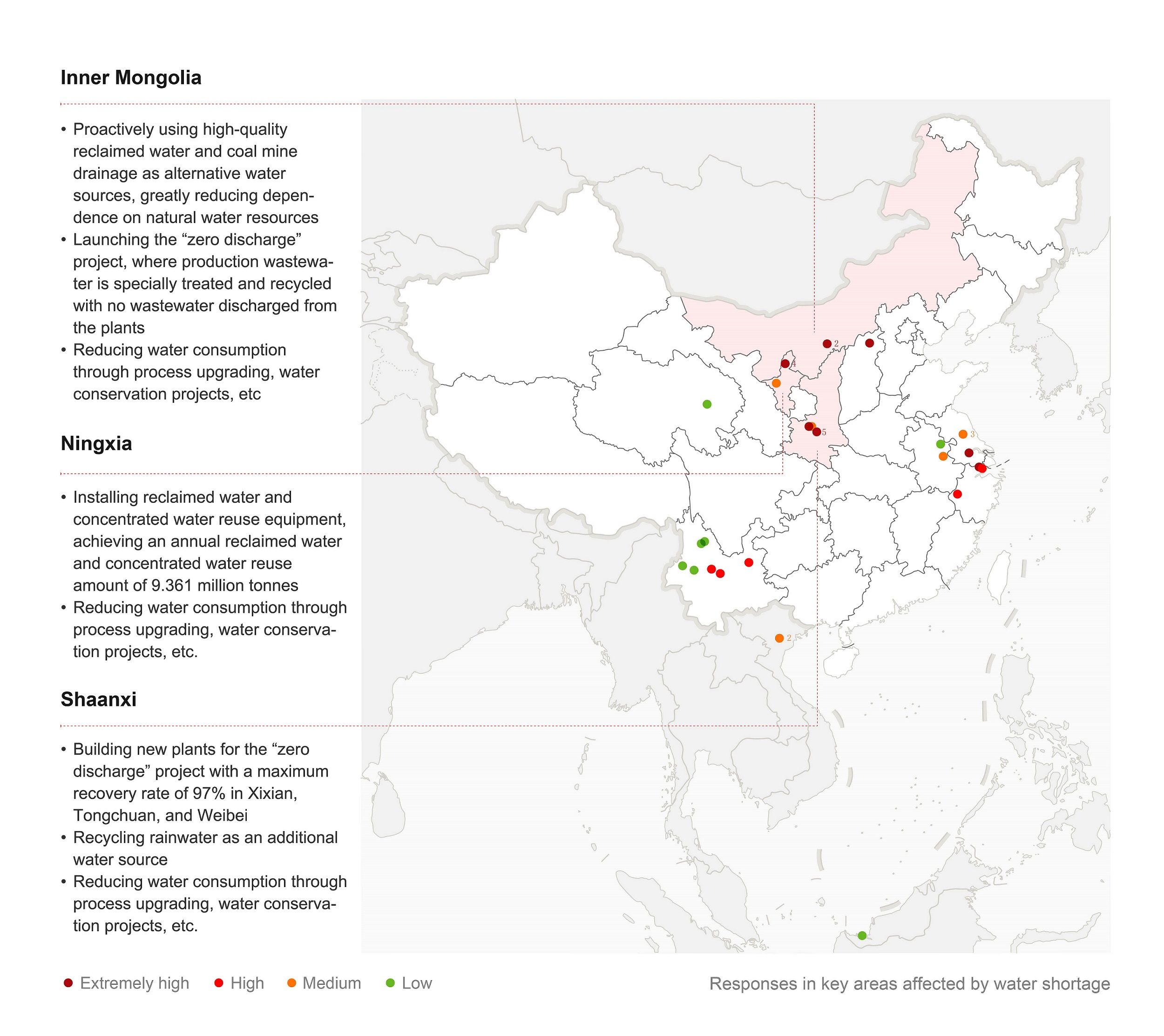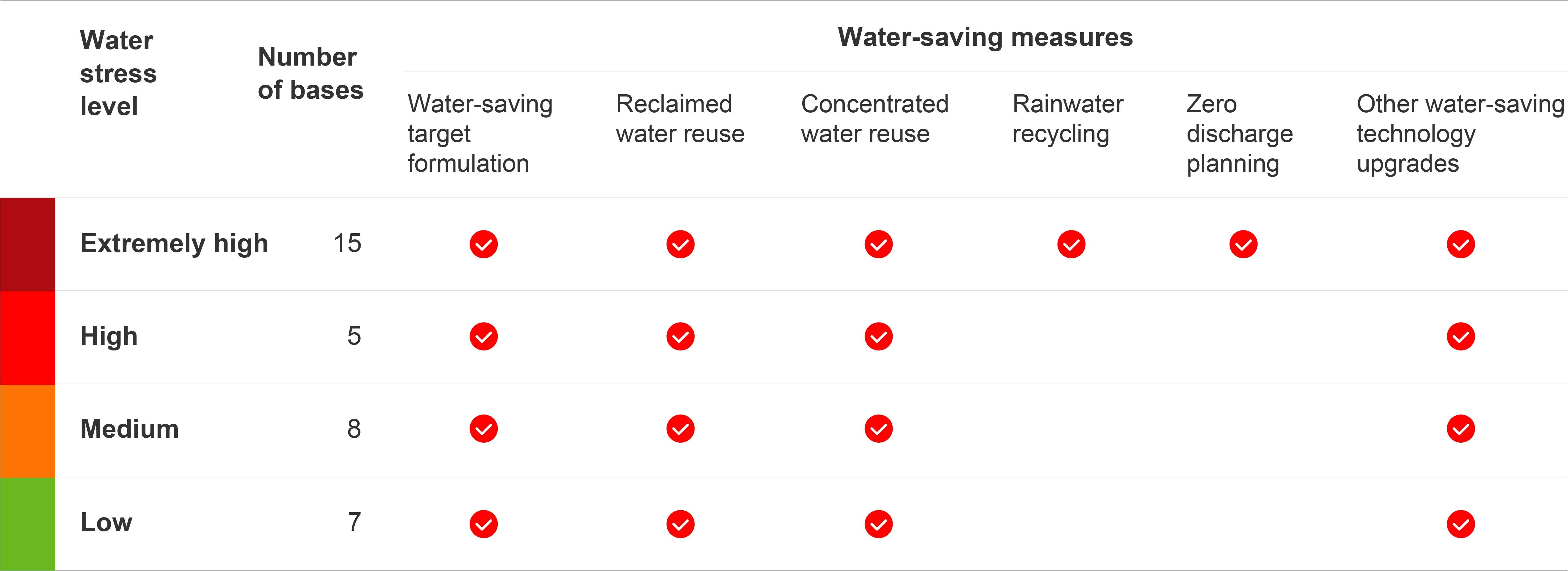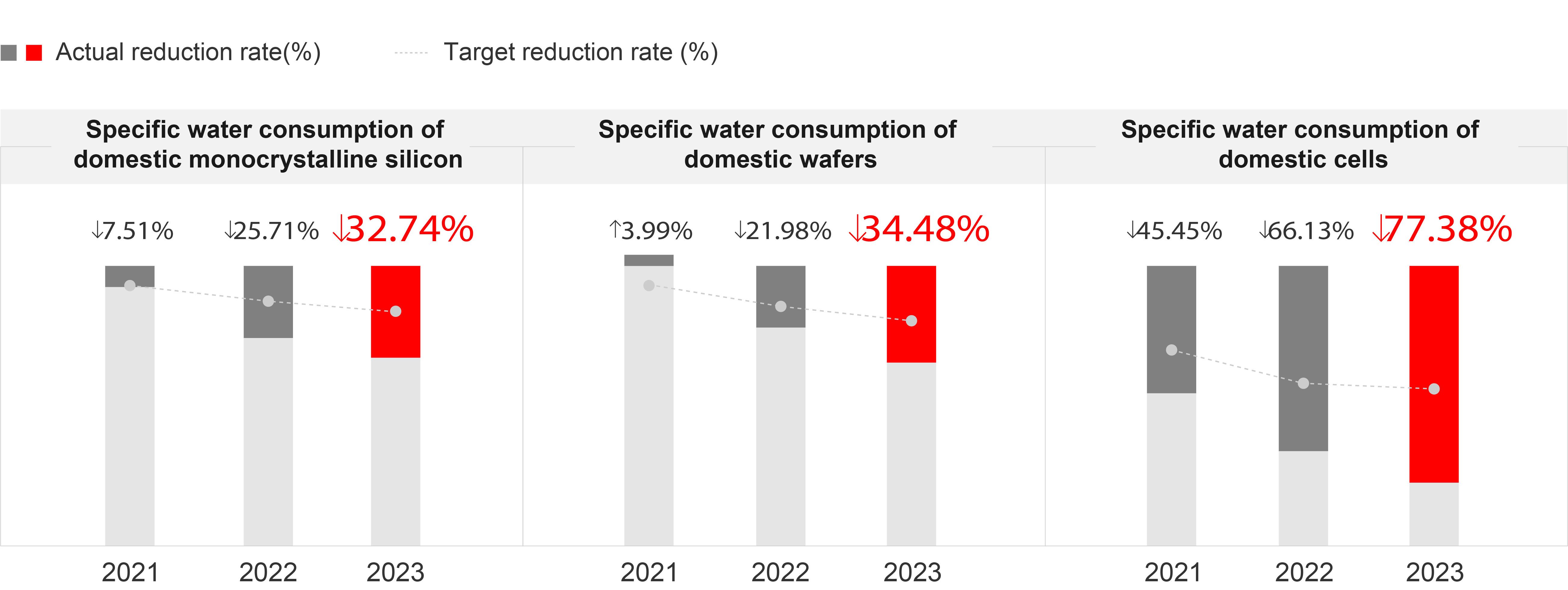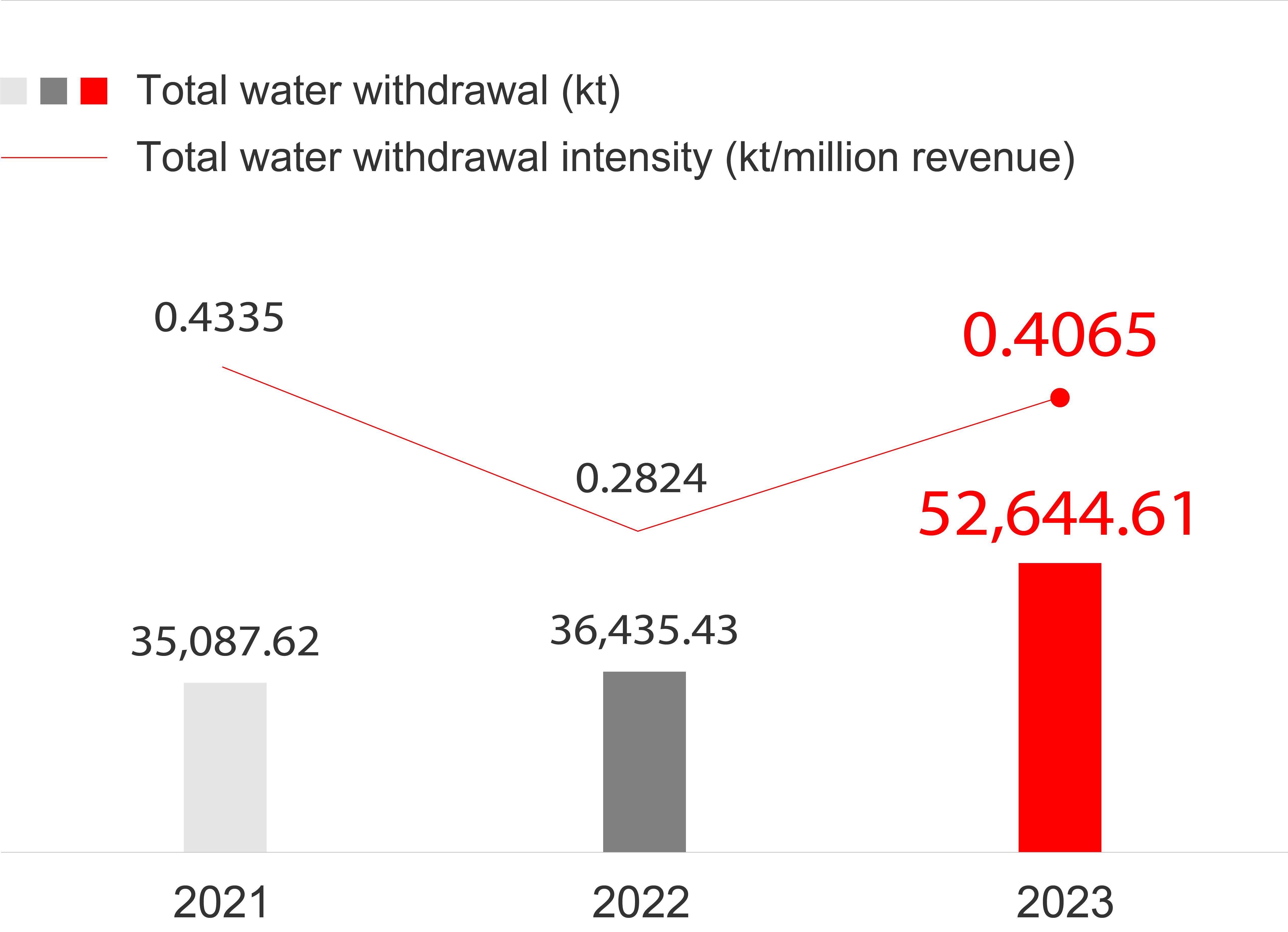
LONGi’s responses in areas with different water risk levels

LONGi conducts an annual inventory of water resources in all its factories based on the World Resources Institute (WRI) water risk atlas, and takes the risk levels of water resources as an important reference in the setting of water conservation targets.

LONGi’s responses in areas with different water risk levels

| Water-saving target formulation | Reclaimed water reuse | Concentrated water reuse | Rainwater recycling | Zero discharge planning | Other water-saving technology upgrades |
|---|---|---|---|---|---|
| Establishing water management systems to detect, assess, and improve water utilization | Conducting wastewater treatment and purification and distributing the recycled water to irrigation, flushing, industrial production, and other activities | Collecting production concentrated water and removing particles such as solid particles and metal ions through treatment | Designing roof drainage systems and water collection devices | Assessing wastewater discharge, and recording the source, type, and amount of wastewater | Including technologies such as the reuse of process circulating water, power facilities circulating water, and other types of water (such as condensate water), pure water purification rate improvement, and equipment upgrades to improve water conservation |
| Formulating water-saving policies and plans, clarifying water-saving targets, responsible departments, and implementation steps, and ensuring the implementation of water saving measures | Conducting concentrated water treatment and purification through ion exchange and other means | Installing filters to remove impurities and store rainwater | Leveraging the recyclable resources in wastewater and realizing the recycling of energy, water, and materials | ||
| Distributing the recycled water to flushing, industrial production, and other activities | Achieving the goal of zero discharge through technology, management, and testing |
Water Conservation
We have incorporated water resources management into LONGi’s sustainable development strategy. In line with the management policy of “environmental compliance, water conservation priority, economic discharge, and scientific management”, we have formulated the Water Conservation Management Policy which includes water-saving management planing, water-saving management implementation, water-saving management performance appraisal, and water-saving management optimization. Meanwhile, we have set up a hierarchical management and control mechanism of production water at the three levels of the manufacturing business group, each center/division, and the base. We have also formulated a performance appraisal mechanism with water-saving target assessment at its core and linked the appraisal results with the remuneration of the persons in charge to promote the extensive participation of all employees in energy management and increase water resource utilization efficiency of the Company.
In 2023, by analyzing the water-saving potential of all production processes and adopting measures such as exploring alternative water sources and optimizing capacity utilization rate, we carried out 118 water-saving process projects within the Group and saved 5.5293 million tonnes of water annually. As a result, the overall water consumption of the Group decreased by 12.75% year-on-year, and 33.52% compared with the base year.
Water saving targets
We focus on the water footprint of products, develop tailored water footprint measurement management plans for different types of products, and monitor the water consumption intensity per unit product. In 2023, the reduction rate of water intensity per unit product of mono-crystalline silicon, wafers, and cells exceeded the expected target. Meanwhile, we built production water “zero discharge” plants.
LONGi’s specific water consumption reduction rate v.s. the base year target (2021-2023)

Note: Modules require little water consumption and therefore no target has been set.
Case| The Ordos Plant achieved “zero discharge” of wastewater
In 2023, Ordos LONGi invested in a new “silicon wafer + cell” project. LONGi Ordos took into account the local water resources shortage at the beginning of construction, introduced zero discharge facilities for industrial wastewater in the design of the project, and built zero-discharge treatment plants and reuse devices outside the plant. By the end of the reporting period, the Ordos Plant had achieved “zero discharge” in its operation. The zero-discharge treatment plants outside the plant had treated 2.7 million tonnes of industrial wastewater, which was from coal mine drainage, and the Ordos Plant used 57,000 tonnes of recycled water from the zero-discharge treatment plants every day. With these efforts, LONGi Ordos has greatly alleviated the current water shortage in Ordos.
LONGi’s water consumption (2021-2023)
